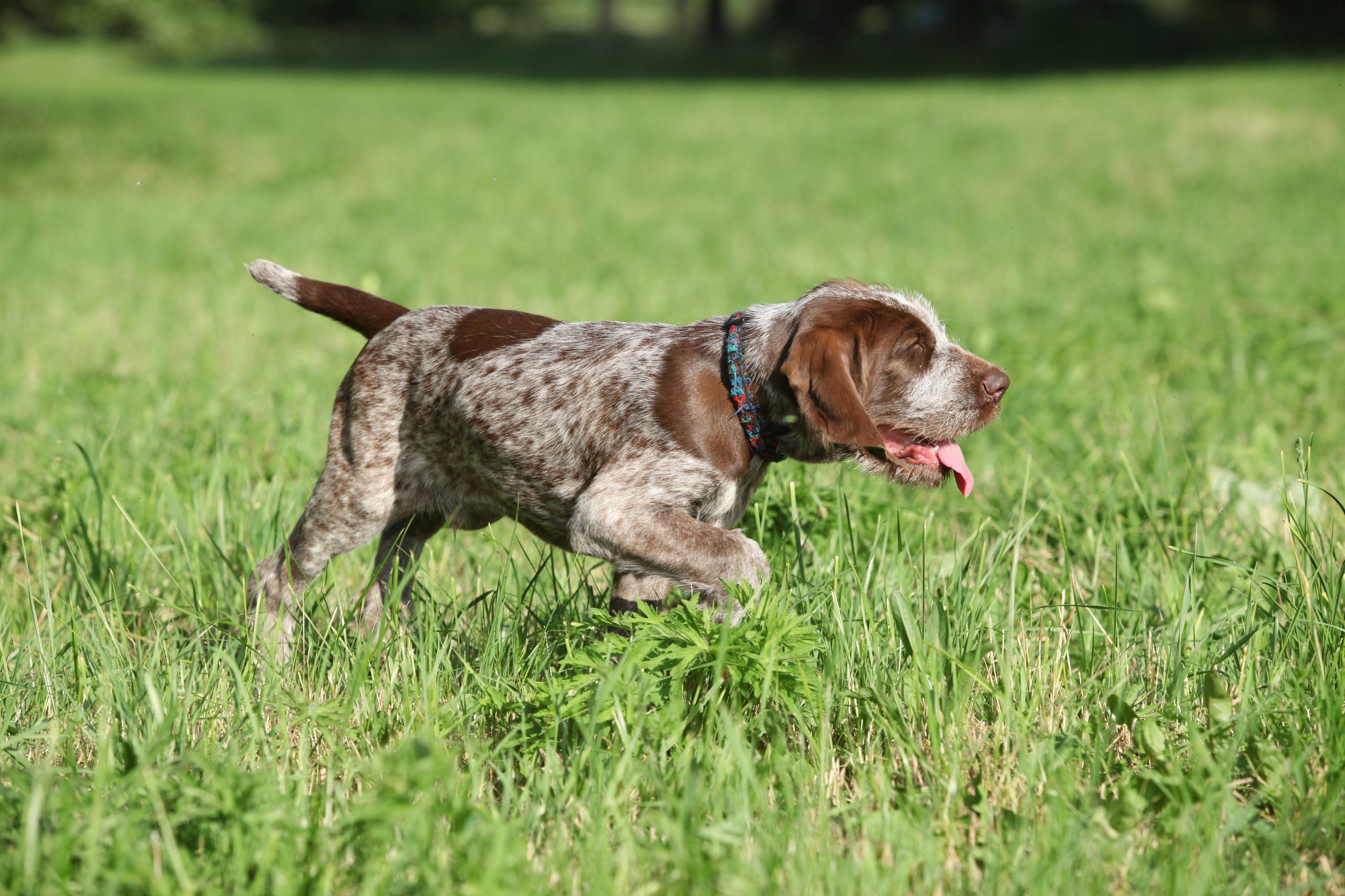Master These Skills to Improve your Bird Dog

Master These Skills to Improve your Bird Dog
So, you want to upland hunt with your dog, huh? I want to applaud you. Your dog has natural hunting abilities, but if you just plan on taking them to the field on opening day, hoping they’ll just figure it out, you might get surprised, but even more likely, you’ll be frustrated. If you can master these skills to improve your bird dog you can level them up to another level.
Quartering
Teaching our dogs to quarter simply means we’re teaching them where we want them to go and how we want them to work the field. We’re simply helping our dogs know that we want them to work a specific pattern in front of us. A strategy I use in my backyard when I’m teaching my pups is walking a “V” pattern from one side of my yard to the other. If my pup “gets it” and works the pattern with me great. If they don’t, I simply call them. To help the process stick, I’ll call their name when I change directions, even if they are working the pattern with me.
Hunt & Find Commands
When I start this drill with a pup, I do a couple of different drills. During one of the drills, I’ll toss some kibble in a smaller, designated area of my yard. After I have the kibble spread in the yard, I walk the pup over to the area and start giving my preferred command. (I use hunt ’em up). I repeatedly say the command as the pup searches for the kibble. They typically don’t lose interest until they are certain the kibble is gone. The other drill I use is similar, but with it, I incorporate dummies or items I’ve been using on retrieves. I don’t incorporate this drill into a training session until my pup is retrieving and recalling well.
Retrieves
No matter if we own a pointer or flusher, we want our pup to retrieve. If we don’t have a way to create an ally or hallway in our backyard, this is the one drill I discourage starting in the “open”. I have a couple of places I can use that allow me to toss a rolled-up sock, a bumper or a ball for my pup to go retrieve. Once they get to the object, they only have two options. The first option, and preference, is for them to run back to me with the object. The other option is for them to lie down and play with the object. What they can’t do in either option is run away from me. That is the purpose of the ally/hallway approach.
The way I introduce my dogs to birds is during retrieves. Depending on the pup’s desire to chew, I might start with a wing or a ball/dummy that is covered in scent or a dummy that I’ve taped a wing or two on. As my pup progresses in their bird work, I introduce them to a frozen bird. From there I introduce them to a thawed bird. From there I introduce them to a fresh kill (when I have access to a bird). This progression lessons the chance of my dog getting turned off to birds because of getting spurred or hit by a wing before they were comfortable with the scent, texture and bird itself. As my pups advance in their bird introduction, quartering drills and hunt commands, then I start introducing them to planted birds that they’ll either flush or point depending on their breed.
Terrain Test
One of the things I think we overlook when prepping our dogs to hunt upland is getting them comfortable working in various kinds of cover and terrain. Helping our dogs work through the heights and densities of grass comes with training in various types of grass. It’s important that we look at training grounds in a progressive frame of mind. We should start with shorter, less dense grass and work our way into taller, more dense grass as our dogs “win” in the cover we’re currently training in. Something else we need to consider is the other types of cover and terrain we plan to hunt with our dogs like the woodlands for partridge and woodcock or wide-open country for grouse or rocky mountainous terrain for quail and chucker. If we plan to hunt those game birds in that kind of cover, but we never train in those kinds of spaces, we’re setting our dog and ourselves up for failure and disappointment.
Other Exercises
A couple of other drills or qualities that are important for our dogs to be familiar with and grow in are gun introduction and steadiness. If you’re reading this article and you have an older dog rather than a puppy, these basic foundation drills still apply to your dog. The only thing that changes is the intensity of the drill. The intensity level exists within the number of distractions in the drill and the “newness” within the drill (location, distance, time, etc.). No matter the age of your dog, your goal should be for your dog to increase and fine-tune their skills with obedience.
by Kyle Dana
July 2025
Here is another article from the July issue of the Iowa Sportsman 2025
Please also come look at our other websites

